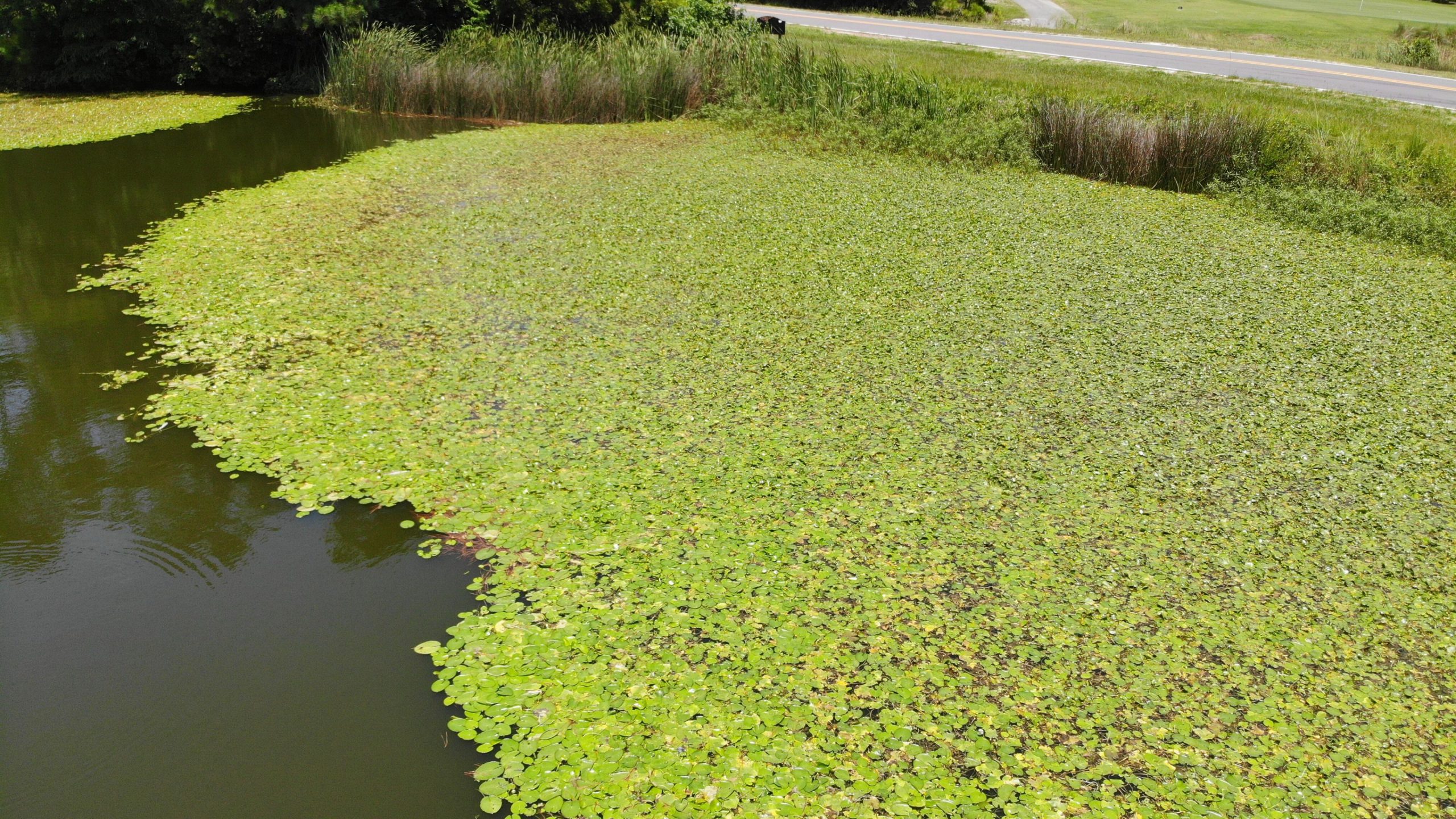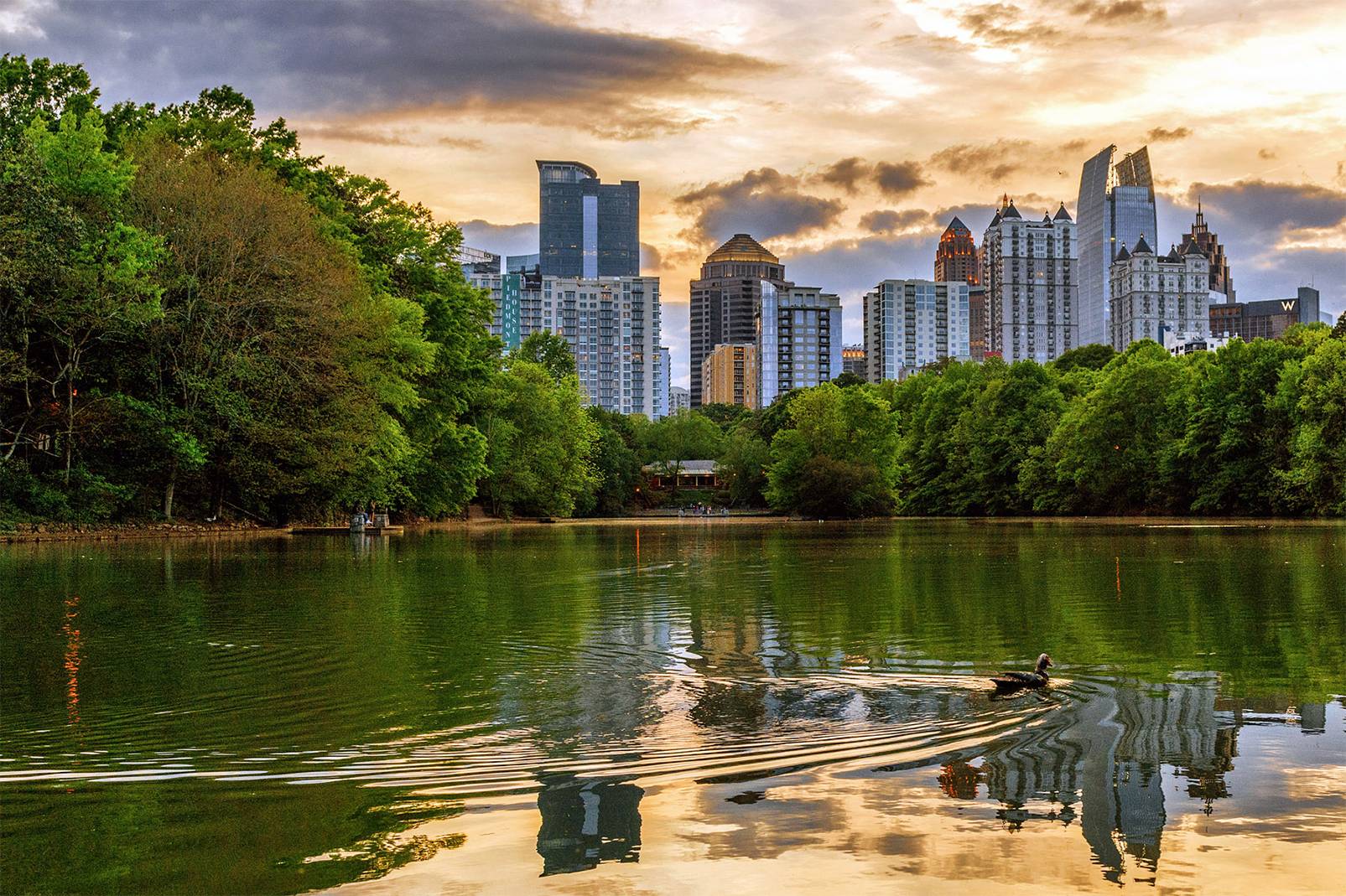
Just like there are beneficial and harmful insects in your garden, there are also good and bad aquatic plants in your pond. This is something very few pond owners are aware of, and we don’t blame them—aquatic ecosystems can be complex! It’s not always obvious which plants are helpful and which are harmful, and it takes a bit of knowledge to tell the difference. That’s why we are here today to help you understand the difference and keep your pond healthy and thriving.
Aquatic Restoration is a reputable pond management company in Buford, GA providing a full lineup of services, including dredging, retention pond maintenance, shoreline stabilization, and many more. In today’s blog post, we will help you differentiate between beneficial and harmful aquatic plants that can grow in ponds. This article will help you understand which plant life is a welcome addition to your pond and which plants can cause problems.
Oxygenators produce the vital oxygen that fish and other aquatic creatures need to survive. They also help filter the water, reducing algae growth and keeping it clear. Examples include Elodea, Cabomba, and Ceratophyllum (Hornwort).
Also known as emergent plants, marginals thrive in the shallow water around the pond's edge. They add a touch of natural beauty and provide valuable habitat for insects, amphibians, and other wildlife. Their roots help stabilize the shoreline, preventing erosion.
Deep water plants, such as water lilies (Nymphaea) and lotus (Nelumbo) add a splash of color and fragrance, while their large leaves provide shade for fish and help regulate water temperature.

Bog plants, also known as moisture-loving plants, add variety and interest to the pond's perimeter. They also provide habitat for a variety of insects and other small creatures.
Water hyacinth, with its beautiful purple flowers and inflated leaves, might seem like an attractive addition to your pond. However, this fast-growing plant can quickly become a nightmare. It reproduces rapidly, forming dense mats that block sunlight from reaching submerged plants. Water hyacinth can also impede water circulation and make it difficult to access the pond.
Duckweed consists of tiny, free-floating leaves that can quickly cover the entire surface of a pond. While a small amount of duckweed can provide shade and food for some aquatic creatures, an overgrowth can block sunlight and hinder photosynthesis in submerged plants.
Cattails are a common sight in many ponds, and while they can provide habitat for some wildlife, they can also become overly aggressive. They spread rapidly through rhizomes, forming dense stands that can crowd out other plants and reduce biodiversity.
Eurasian watermilfoil is a submerged aquatic plant that forms dense, tangled mats. It can reduce biodiversity and hinder recreational activities like boating and swimming.
Hydrilla is a submerged aquatic plant known for its aggressive growth and ability to form dense mats. It can quickly block sunlight, reduce oxygen levels, and hinder water flow. Hydrilla can also create navigational hazards and impede recreational activities.
As a pond owner, it’s your responsibility to keep your pond in good condition. It’s advisable to watch out for the growth of harmful aquatic plants that can quickly disrupt the delicate balance of your pond’s ecosystem. These plants can grow uncontrollably, and before you know it, you’ll be having dense mats and poor water quality. It’s a good idea to have a trusted pond management company on speed dial, like Aquatic Restoration, so you can address these issues in a timely manner. Our experts can help you identify and manage invasive species. For all of your pond management services, look no further than Aquatic Restoration.
Algae and contaminants are hands down among the most common and frustrating problems that pond owners face today. Excessive algae…
Recreational lakes are valuable community and private assets, offering opportunities for boating, fishing, swimming, and relaxation. Over time, however,…
Stormwater ponds form a part of modern stormwater management systems. As the name suggests, they collect and manage runoff from…
Sediment buildup is one of the biggest threats to lakes and ponds. It not only impacts water quality but also…
If you own a pond or lake, you know that proactive maintenance is an integral part of keeping the…